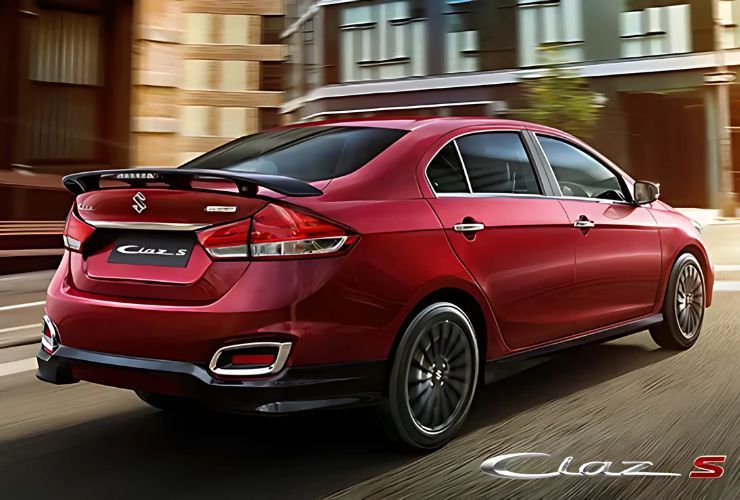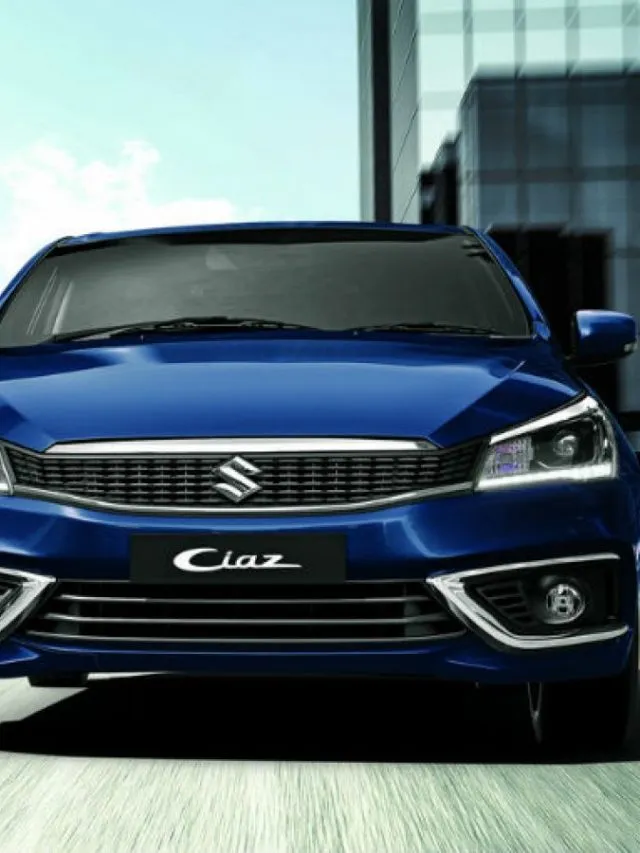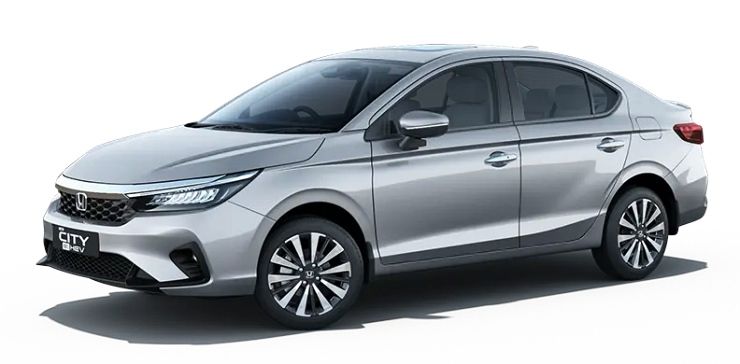Maruti Ciaz Discontinued But The Name May Appear Again On SUV!



The Maruti Suzuki Ciaz, a best-seller for a short while, but mostly the runner-up to Honda City in the past, has reached the end of the road. As of April 2025, the carmaker has pulled the plug on the model that once stood tall against segment leaders like the Honda City and Hyundai Verna. But as the auto industry has taught us time and again, a farewell isn’t always final. While the Ciaz sedan may be history, the nameplate itself could return—possibly in a very different form. Here’s a closer look at its journey, why it faded, and how it might stage a comeback.
The Ciaz’s demise is part of a larger shift in India’s automotive landscape. Sedans, which commanded 20% of the market in 2015, have since been relegated to below 10% as SUVs now dominate over 50% of car sales. The numbers tell the story—by February 2025, the overall sedan segment had shrunk by 2.23% year-on-year. Even though the Ciaz posted an unexpected 128% YoY spike in February 2025 (1,097 units sold), it was merely a blip in an otherwise downward trend.
The problem? Maruti’s own priorities had shifted. With models like the Grand Vitara, Fronx, and Brezza thriving, the Ciaz was left to wither on the vine, receiving no major updates in features or performance. Buyers flocked to higher-riding, tech-laden SUVs, leaving sedans struggling to stay relevant.

The Ciaz’s 1.5L petrol engine (103 bhp) was adequate but uninspiring compared to its rivals. The Hyundai Verna offered 113 bhp along with ADAS, digital displays, and a sunroof. The Honda City delivered 119 bhp with a hybrid powertrain option. Volkswagen Virtus and Skoda Slavia outshone the Ciaz with their turbo-petrol engines and superior handling. While the Ciaz excelled in fuel efficiency, boasting 20.65 kmpl with its SHVS mild-hybrid tech, its outdated 4-speed automatic transmission and absence of six airbags or ADAS left it lagging behind.
Even within Maruti’s portfolio, the Ciaz was sidelined. Its presence in Nexa showrooms dwindled as SUVs like the Grand Vitara and Fronx took center stage. The market had spoken—buyers preferred high ground clearance and rugged aesthetics over the low-slung elegance of sedans.
Despite its decline, the Ciaz wasn’t without its merits. It offered best-in-class rear legroom, making it an excellent choice for families. Its 510-litre boot space made it more practical than many rivals. Fuel efficiency remained a major strength, making it one of the most economical cars in its segment. With a starting price of ₹9.41 lakh, it significantly undercut the Verna (₹11.07 lakh) and City (₹11.86 lakh), making it an attractive proposition for budget-conscious buyers.
For those who owned one, the Ciaz was a reliable, low-maintenance workhorse with a comfortable ride. Many appreciated its genuine five-seater capacity and long-distance comfort. However, as the market evolved, its shortcomings in performance, transmission options, and modern safety features became too glaring to ignore.
If history is any guide, this might not be the end of the Ciaz name. Maruti Suzuki’s Senior Executive Partho Banerjee has hinted at a possible resurrection, citing the example of the Baleno—a sedan that disappeared in 2007 but returned as a premium hatchback in 2015.
The Ciaz nameplate could return in an entirely new avatar. A Ciaz-based crossover or SUV could capitalize on the recognition the brand still holds, much like Toyota repurposed the Urban Cruiser name. Another possibility is a hybrid or EV reboot, aligning with Maruti’s growing focus on electrification. Hyundai successfully revived the Creta after a brief hiatus, proving that strong brand names can adapt to new forms. If Maruti plays its cards right, the Ciaz name could live on—just not as a sedan.

The Ciaz entered the mid-size sedan market as a value-driven alternative, but over time, its rivals steadily pulled ahead in performance, features, and technology. A look at the numbers tells the story of how it stacked up against key competitors—the Hyundai Verna, Honda City, and Volkswagen Virtus.
At ₹9.41 lakh (ex-showroom), the Ciaz was significantly more affordable than its rivals. The Hyundai Verna, priced at ₹11.07 lakh, and the Honda City, at ₹11.86 lakh, positioned themselves as more premium offerings, while the Volkswagen Virtus sat just below the City at ₹11.56 lakh. While the Ciaz’s lower price gave it an edge in terms of affordability, it also reflected its relatively dated technology and lack of premium features.
Under the hood, the Ciaz’s 1.5L petrol engine produced 103 bhp—sufficient for daily commutes but underwhelming in a segment where power figures have steadily climbed. The Verna and City pushed ahead with 113 bhp and 119 bhp, respectively, while the Virtus, with its 1.5L TSI turbo-petrol engine, delivered a commanding 148 bhp, making it the enthusiast’s choice. In an era where performance and turbocharged engines have become the norm, the Ciaz’s naturally aspirated engine simply couldn’t keep pace.
Mileage was one of the few areas where the Ciaz excelled, thanks to its SHVS mild-hybrid technology. Delivering 20.65 kmpl, it comfortably outperformed the Verna (18.6 kmpl) and City (17.8 kmpl), while coming close to the Virtus (19.62 kmpl). This efficiency made it an attractive option for buyers seeking a cost-effective sedan with lower fuel expenses. However, in an increasingly feature-driven market, mileage alone wasn’t enough to keep the Ciaz relevant.
Where the competition truly pulled away was in technology and features. The Hyundai Verna brought in ADAS, a sunroof, and a digital cockpit, while the Honda City leveraged its hybrid powertrain as a standout offering. The Volkswagen Virtus provided a more engaging driving experience with a digital dashboard and a performance-oriented turbo-petrol engine. Meanwhile, the Ciaz stuck to its tried-and-tested formula but failed to evolve with the times.
Ultimately, the Ciaz may have been a great car for its time, but the numbers made one thing clear—it struggled to match the rising expectations of buyers who now demanded more power, advanced safety, and cutting-edge technology. In an SUV-dominated era where sedans must go the extra mile to stay relevant, the Ciaz simply couldn’t keep up.
With the Ciaz discontinued, Maruti has officially exited the mid-size sedan space, turning its full attention to SUVs and hybrids. But Banerjee’s words leave room for speculation: “When a brand is strong, forms can change.”
Could a Ciaz-inspired SUV bridge the gap between the Brezza and Grand Vitara? Could we see a future hybrid bearing the Ciaz badge? While there’s no official confirmation, one thing is clear—brands don’t truly die, they evolve. And in India’s fast-changing auto landscape, reinvention is often just around the corner.
For now, the Ciaz takes its final bow. But don’t be surprised if it resurfaces down the road—just with a new shape and a new purpose.